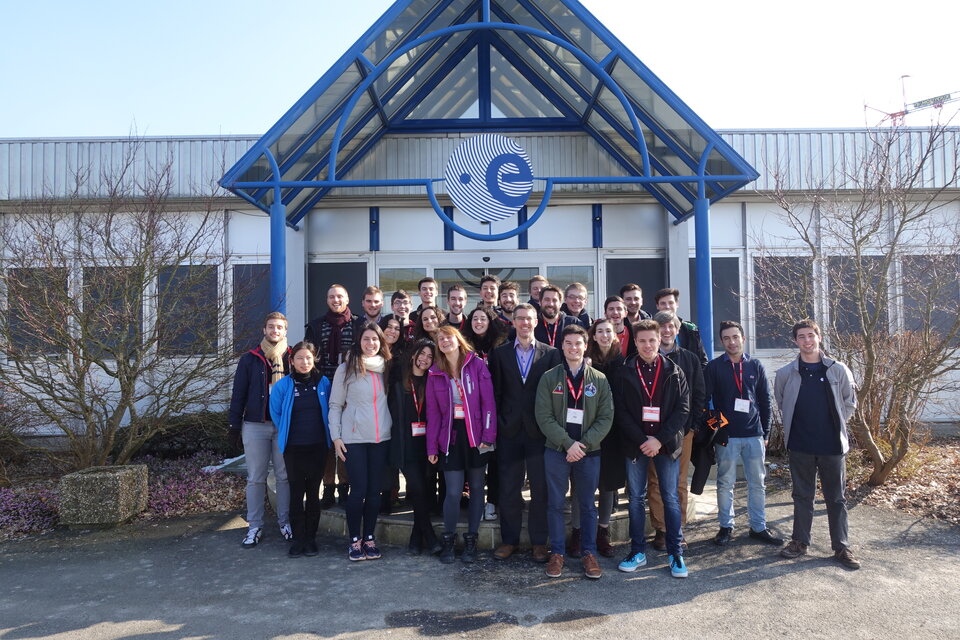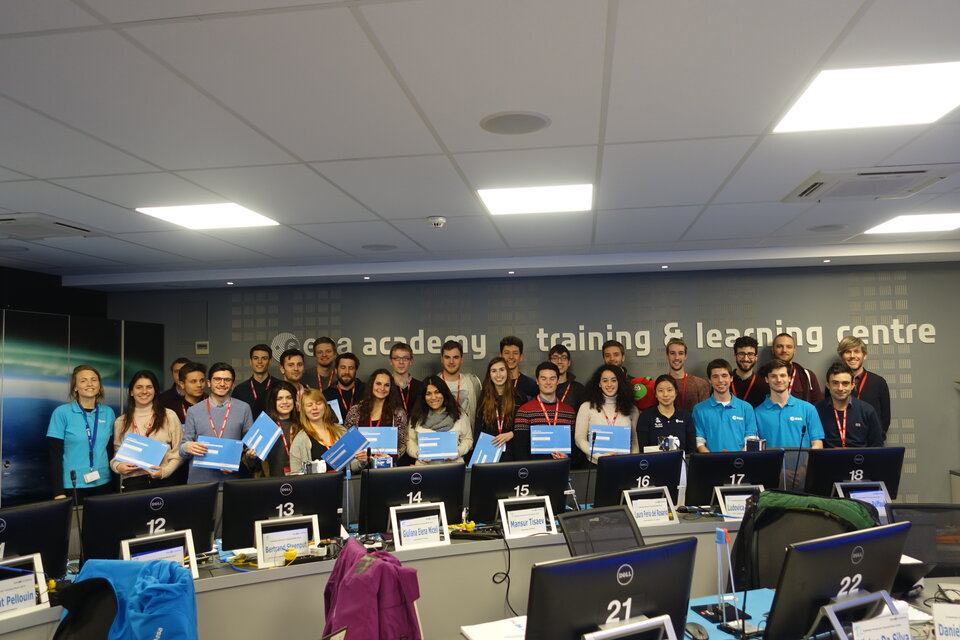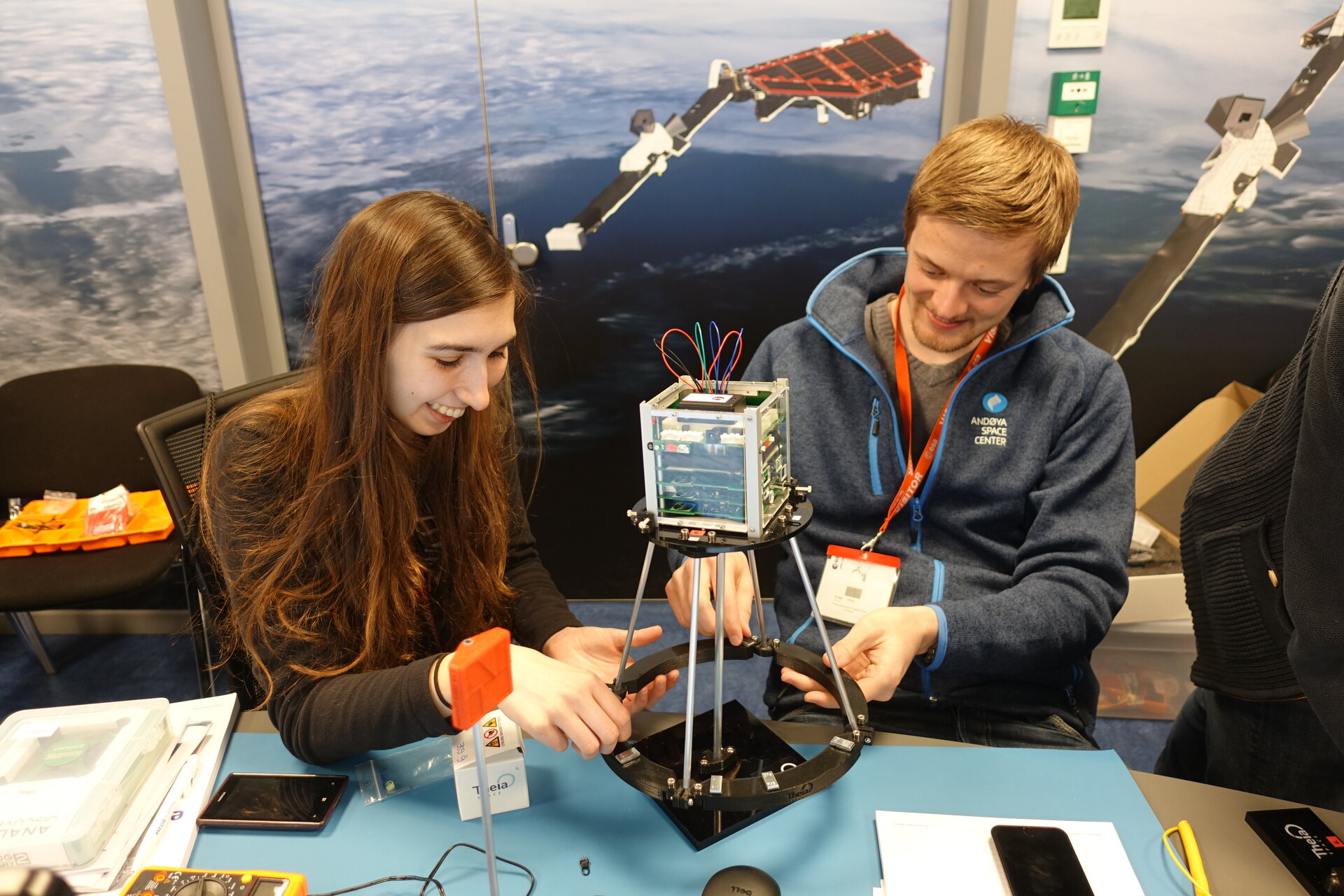Students inspired by CubeSats Hands-On Training Week 2018
The first ESA Academy’s CubeSats Hands-On Training Week, which was held from 26 February to 2 March 2018 at ESA Academy’s Training and Learning Centre in ESEC, Belgium, has just been completed.
The training week was designed to train university students, that were considering to work or are already working on a CubeSat project, to get hands-on experience with satellites using the Educational Satellite models (ESAT's) developed by Theia Space. This pilot edition was attended by 22 University students from 11 different ESA Member and Associate States.
Throughout the week, the students were able to interact with ESA specialists who taught them some of the skills that were required to perform the practical tasks that followed. For the laboratory sessions, the students were teamed up in pairs to work on their own ESAT model provided by the ESA Education Office.
“The experts present were all extremely enthusiastic and allowed me to learn more than I had imagined to be possible in a week,” said a Belgian student from Universite Catholique de Louvain.

At the start of the week the student teams became acquainted with the Fly Your Satellite! programme and also put their software skills to practice by developing software code to control the ESAT payload experiment. The experiment involved a heater and an LED, with the students progressing from being able to blink the LED, all the way to developing a controller for the heater.
Throughout the week, the students applied the theoretical knowledge that they learned during the lectures to the spacecraft hardware on their table. During the On-Board Data Handling laboratory session, the student teams learned the importance of having a good data handling structure by programming the ESAT to receive their own custom tele-commands and to broadcast the telemetry packets that they had defined themselves. In the Electrical Power Subsystem session, the students experimented with the ESAT’s solar panels and batteries by using a solar simulator. The students also made use of the ESAT’s attitude control system to develop an attitude control algorithm of their own.
Students also learned about following detailed procedures, and the different types of verification methodologies applied to spacecraft to ensure they are fit for spaceflight. The students assembled the ESAT and performed integration tests, just as they had learned during the lectures.
Lectures on systems engineering and communications were also given to complement the knowledge obtained during the training week.
"The hands-on training week was an exceptional opportunity for gaining both theoretical and practical experience on CubeSats, their subsystems, and the whole designing procedure! I really liked the schedule we followed: lectures first and then practical implementation with a real CubeSat!” explained a Greek student from Aristotle University of Thessaloniki.

At the end of the week, a Mission Operations Concepts Specialist came to teach the students about how spacecraft operations can be very unforgiving and offered advice on how to design systems with operations in mind. Then came the biggest challenge of the week: using all the knowledge they had gained, the students were given a simulated operations scenario. The pressure was on as they planned engineering and science operations, then executed them during ground station passes, speedily fixing anomalies to complete the mission!
The experience was summed up by a French student from the Aeronautic Aerospace Automotive Railway Engineering School (ESTACA): “This week was absolutely amazing. First of all, I could feel during fantastic lectures the passion of every lecturer and student. Then, the lab sessions allowed me to observe and understand the effects explained during lectures. Being able to assemble, control and operate a CubeSat in 5 days was an incredible experience. This Training Week convinced me for good to start a CubeSat project in my university.”
After this intensive week, the students gained useful knowledge on CubeSats and are better prepared to develop their own. This will certainly give them a boost should they decide to apply to the Fly Your Satellite! programme with their CubeSat ideas.
For more information about upcoming ESA Academy training sessions, please visit our website.
Contact: esa.academy @ esa.int


